| Third Party and Independent Candidates Reading with Questions |
|---|
| www.studenthandouts.com ↣ American History ↣ American History Readings with Questions |
The United States is often thought of as functioning under a two-party system. In practical effect this is true: Either a Democrat or a Republican has occupied the White House every year since 1852. At the same time, however, the country has produced a plethora of third and minor parties over the years. For example, 58 parties were represented on at least one state ballot during the 1992 presidential elections. Among these were obscure parties such as the Apathy, the Looking Back, the New Mexico, the Tish Independent Citizens, and the Vermont Taxpayers.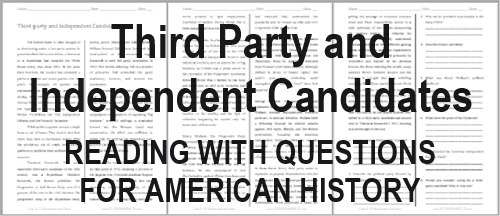 Third parties organize around a single issue or set of issues. They tend to fare best when they have a charismatic leader. With the presidency out of reach, most seek a platform to publicize their political and social concerns.
Third parties organize around a single issue or set of issues. They tend to fare best when they have a charismatic leader. With the presidency out of reach, most seek a platform to publicize their political and social concerns.Theodore Roosevelt. The most successful third-party candidate of the 20th century was a Republican, Theodore Roosevelt, the former president. His Progressive or Bull Moose Party won 27.4 percent of the vote in the 1912 election. The progressive wing of the Republican Party, having grown disenchanted with President William Howard Taft, whom Roosevelt had hand-picked as his successor, urged Roosevelt to seek the party nomination in 1912. This he did, defeating Taft in a number of primaries. Taft controlled the party machinery, however, and secured the nomination. Roosevelt's supporters then broke away and formed the Progressive Party. Declaring himself as fit as a bull moose (hence the party's popular name), Roosevelt campaigned on a platform of regulating "big business," women's suffrage, a graduated income tax, the Panama Canal, and conservation. His effort was sufficient to defeat Taft. By splitting the Republican vote, however, he helped ensure the election of the Democrat Woodrow Wilson... Questions with answers in bold: 1. Around what do third parties organize? A single issue or set of issues. 2. Describe the political party formed by Theodore Roosevelt. Progressive or Bull Moose Party; formed from the Progressive wing of the Republican Party. 3. Who ran for president as a Socialist in the early 1900s? Eugene Debs 4. Describe Robert LaFollette. Progressive; platform of nationalizing railroads and the country's natural resources, incxreased taxation on the wealthy, and the right of collective bargaining. 5. What was Henry Wallace's political platform? Opposition to the Cold War, the Marshall Plan, and big business; end discrimination against African Amercans and women; minimum wage. 6. What were the goals of the Dixiecrats? Continuing racial segregation and the Jim Crow laws that sustained it. 7. Who founded the American Independent Party in 1968? George Wallace 8. Would you consider voting for a third-party candidate? Why or why not? Answers will vary. Click here to print. |
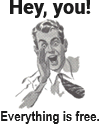 | 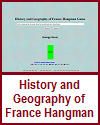 | 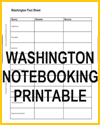 | 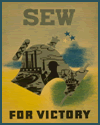 | 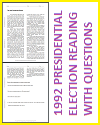 | 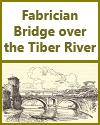 |
| UNIT I: | Early America | UNIT IX: | Discontent and Reform | ||
| UNIT II: | Colonial Period | UNIT X: | War, Prosperity, and Depression | ||
| UNIT III: | American Revolution | UNIT XI: | New Deal and World War II | ||
| UNIT IV: | New National Government | UNIT XII: | Postwar America | ||
| UNIT V: | Westward Expansion | UNIT XIII: | Decades of Change | ||
| UNIT VI: | Sectional Conflict | UNIT XIV: | New Conservatism | ||
| UNIT VII: | Civil War and Reconstruction | UNIT XV: | Into the Twenty-first Century | ||
| UNIT VIII: | Growth and Transformation | UNIT XVI: | Polarization and Deglobalization |
| www.studenthandouts.com ↣ American History ↣ American History Readings with Questions |








